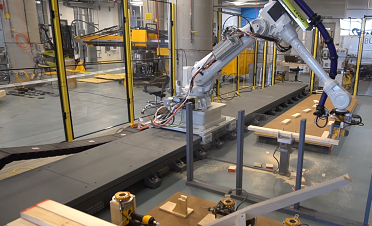 Friday, April 26, 2024
Friday, April 26, 2024  Friday, April 26, 2024
Friday, April 26, 2024 
As blogged on ZDNet.com, here’s a good sign that robots are moving beyond academia and into the real world: Architects are using robots to get ready for the future of construction. The automotive industry has already proven how helpful robots can be for industrial settings where they can do the heavy lifting, but construction sites are messier and always changing. Despite the challenges of a less-structured environment, the construction industry can still gain major efficiencies by introducing additive manufacturing and automation to equipment.
ABI Research reports that Autonomous Mobile Robots (AMRs) are making their way into mines and construction sites. The market research firm predicts that while in 2018, a solid 28.7 percent of commercial robots’ shipments had some degree of autonomous navigation, by 2027, the percentage will be as much as 79.3 percent.
We spoke with Andy Tsay-Jacobs, who is the director of the Building Technology Lab at Perkins+Will, to get an architect’s perspective on construction robots. Architecture involves creativity and design sensibility, which are some of the last skills that robots haven’t mastered. But that doesn’t mean that architects can just ignore the robotic revolution.
Tsay-Jacobs says, “We want to embrace that future with working relationships that are breaking the mold with how you use automation to do architecture and construction better.”
Working out of the Autodesk Technology Center in Boston, Perkins + Will programmed a robot to build a 14-foot high timber pavilion in just 54 hours. If human had done it, Tsay-Jacobs says, it would have taken much longer because the nails were within just one millimeter of tolerance. The material used was mass timber, which is an engineered wood alternative to concrete and steel that is trending in the building industry.
Keep reading this blog on ZDNet.com
Watch the video and learn more about Construction Links Network – the peer-to-peer network sharing platform for the construction, building and design community.
Ideal for YOUR Press Releases | Project Updates | New Appointments | Awards & Milestones | Company News | New Products/Services | Brochures | Videos | Infographics | Blog Sharing | Events and More